The Case Against Small Caps
Testing Alternative Metrics to Market Capitalization
June 2019. Reading Time: 10 Minutes. Author: Nicolas Rabener.
SUMMARY
- The performance of the Size factor in the US was positive since 1926, but not particularly attractive
- Returns in Europe were more favorable, but not in Japan
- Alternative metrics to market capitalization would not have resulted in better performance
SMALL VERSUS LARGE STOCKS
In the David vs. Goliath scenario, a smaller, weaker character faces down and defeats a larger and stronger opponent. Such triumphant underdog storylines abound in the realm of business: Think Netflix vs. Blockbuster, Alibaba vs. eBay in China, or Amazon vs. Barnes & Noble.
For small companies, survival is much more of a struggle than for their larger, more established counterparts. Their greater challenge is reflected in higher business risk. In the US stock market, the smallest 10% of companies by market capitalization exhibited annualized volatility of 15.3%, compared to 14.1% for the largest 10%, according to data going back to 1926 from the Kenneth R. French Data Library.
Investors naturally expect to be compensated for holding riskier stocks. But the Size factor, which represents a strategy of buying small-cap stocks and shorting large caps, has not generated attractive returns over the last 90-plus years. But maybe market capitalization is the wrong metric. Could different measurements of size have generated better performance? (read Factor Returns: Small vs Large Caps)
METHODOLOGY
We focus on the Size factor in US, European, and Japanese stock markets. The long-short, beta-neutral portfolios are created by selecting the top and bottom 10% of stocks ranked by their size, which is measured via five different metrics: market capitalization, enterprise value, average daily value traded (ADV), total assets, and total sales. Only stocks with a minimum market capitalization of $1 billion are included. Portfolios are rebalanced monthly and each transaction incurs costs of 10 basis points.
THE LONG VIEW
Returns from the Size factor have been almost flat since 1926, with some significant boom-and-bust cycles. The first influential paper on excess Size factor returns was published by Rolf W. Banz in 1981 – the approximate performance peak for the Size factor.
Although the returns were positive across the entire observation period, they were not especially robust given decade-long drawdowns. Making matters worse, the data excludes transaction costs and thus overstates returns.
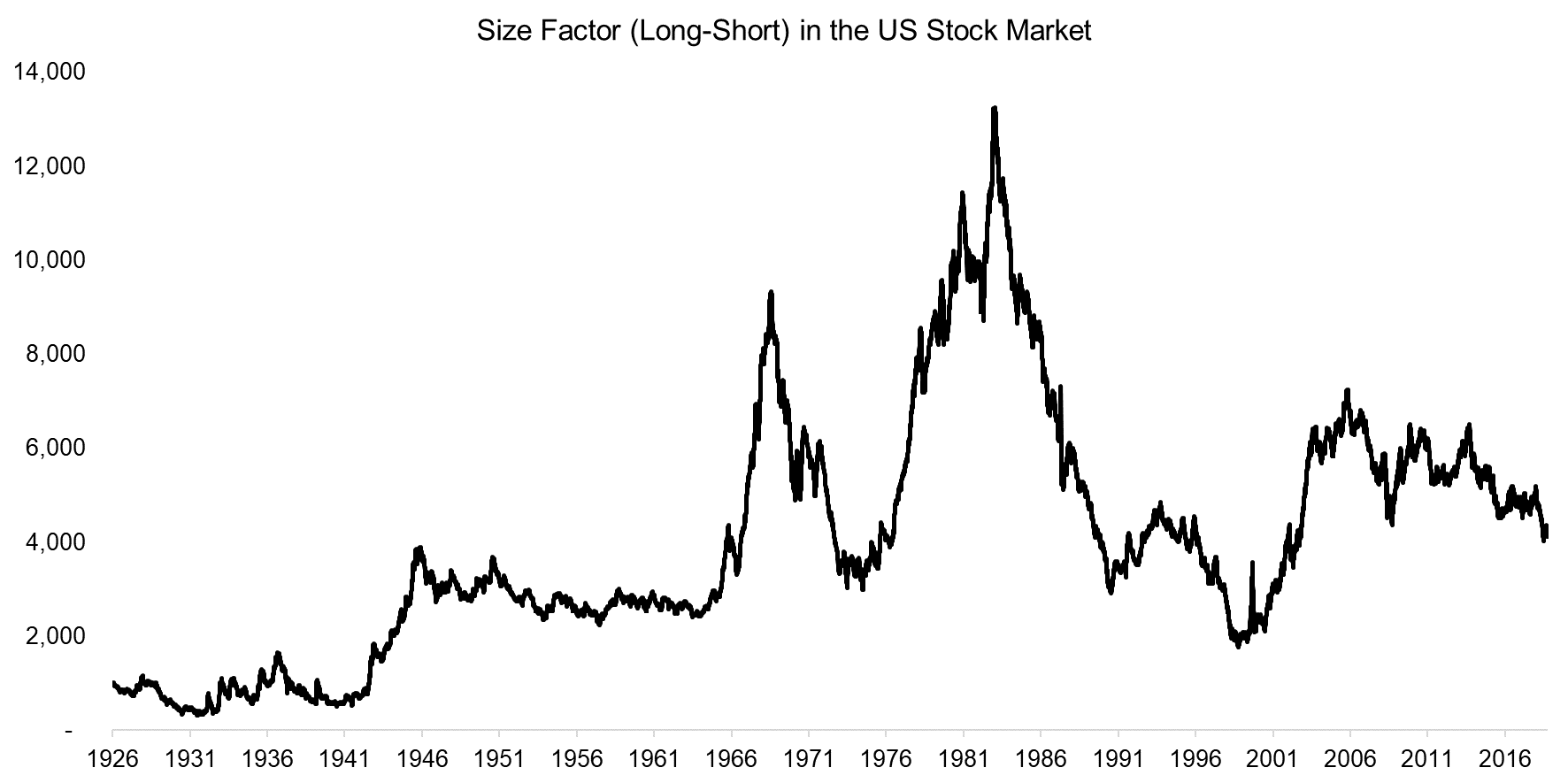
Source: Kenneth R. French Data Library
MEASURING SIZE DIFFERENTLY IN THE US STOCK MARKET
Market capitalization is the prevailing metric for weighting stocks in equity indices. But it is not the only way to measure the size of companies. We used four alternatives and applied them in the US stock market. The results showed varied Size factor performance since 2000.
Market capitalization and average daily value traded (ADV) yielded almost identical returns. This is intuitive since the stocks with the largest market capitalizations tend to be among the most traded. Enterprise value, which comprises market capitalization and debt, resulted in flat performance. In contrast, weighting companies by total assets and total sales generated negative returns.
The strong performance of market capitalization and ADV between 2000 and 2002 is best ignored since it resulted from the rebound following the severe tech bubble drawdown as investors preferred large over small companies.
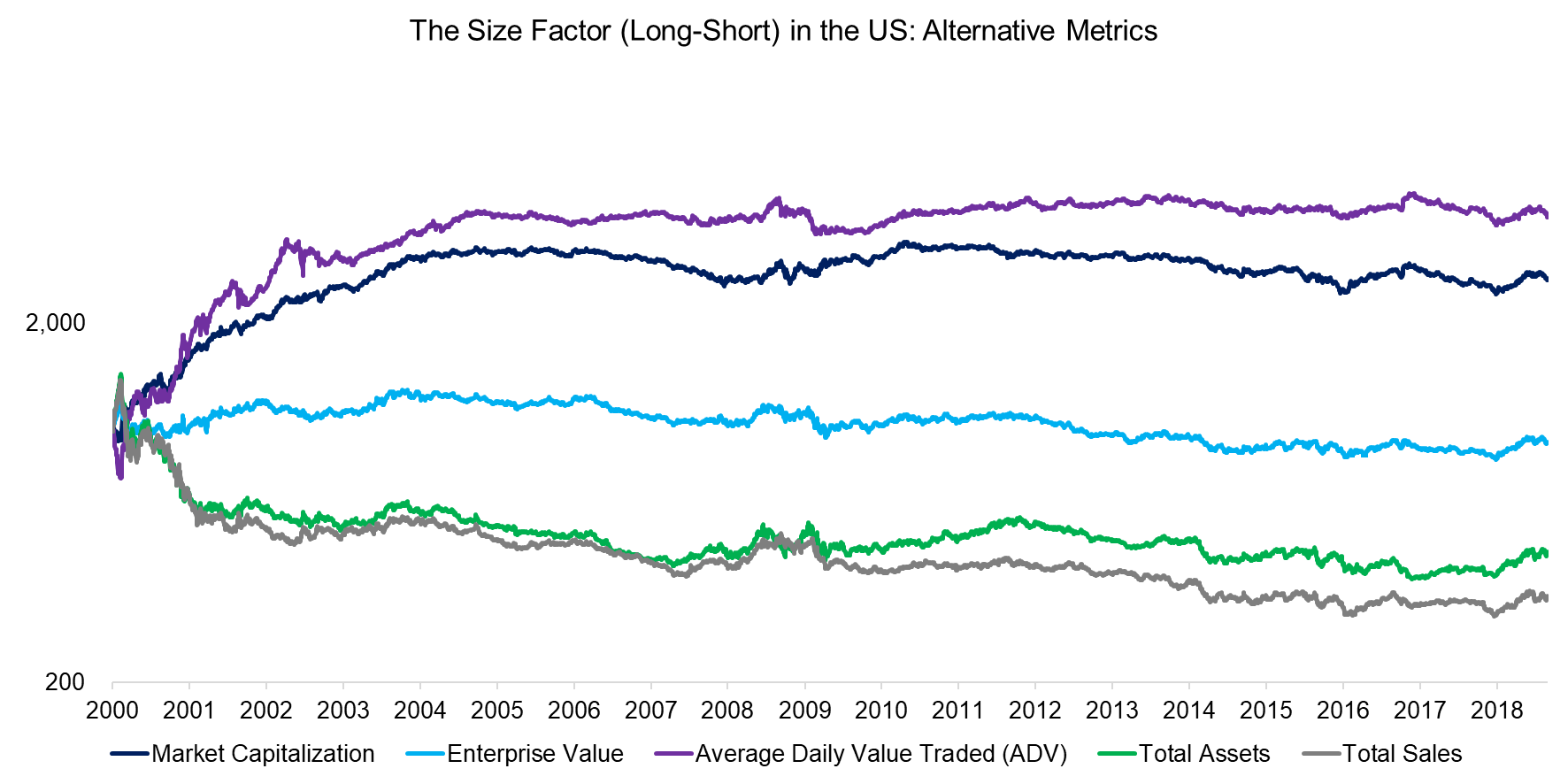
Source: FactorResearch
To analyze the alternative Size metrics, we looked at the current median market capitalizations for the long and short portfolios. We found the portfolio characteristics are comparable across the different metrics, except for total assets and total sales, which feature smaller companies in the long portfolio as measured by market capitalization. This likely reflects a preference among investors for fast-growing, asset-light companies over more mature businesses with greater assets and sales.
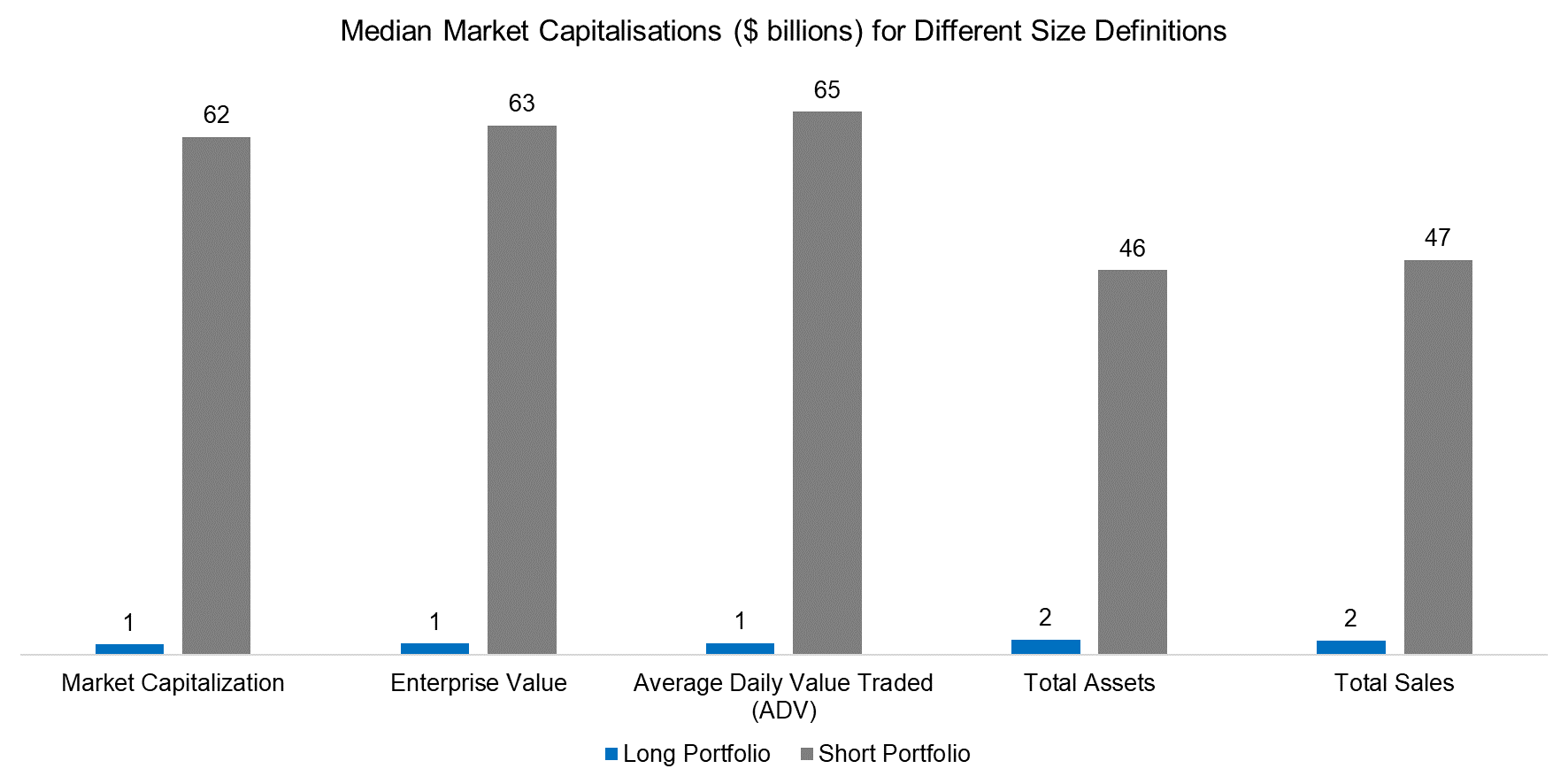
Source: FactorResearch
Next, we developed a sector breakdown of the long portfolio of small caps for the different metrics from 2000 to 2018. This yielded the following observations:
- Market capitalization was the most diversified across sectors.
- Enterprise value was dominated by the technology sector – likely a reflection of tech stocks’ comparatively low leverage.
- ADV: Financials contributed most stocks, but difficult to explain why.
- Total assets was heavy with tech and health care stocks, probably because such companies have few assets.
- Total sales: As with total assets, technology and health care (biotech) stocks tend to grow quickly, but often have little or no sales.
Overall, from a sector perspective, alternative Size factor metrics resulted in diverse portfolios.
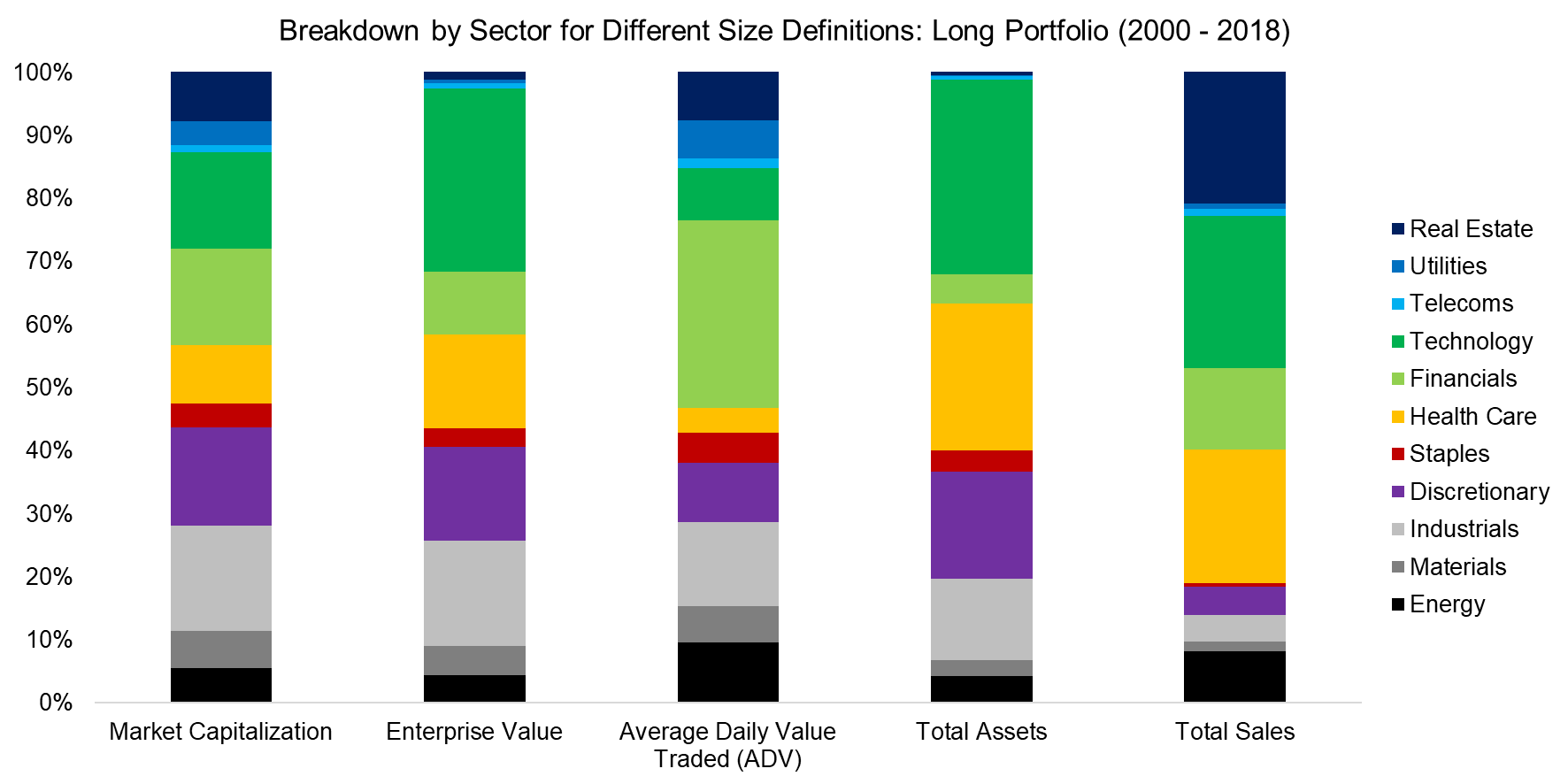
Source: FactorResearch
EUROPE TO THE RESCUE?
The lack of a US small-cap premium is perplexing. But maybe the US equity market is an outlier. The same strategies applied in European stock markets, it turns out, yield positive and relatively consistent returns since 2000. The alternative metrics show somewhat similar trends, in contrast to the conflicting US results. So maybe there’s hope for small-cap investors after all.
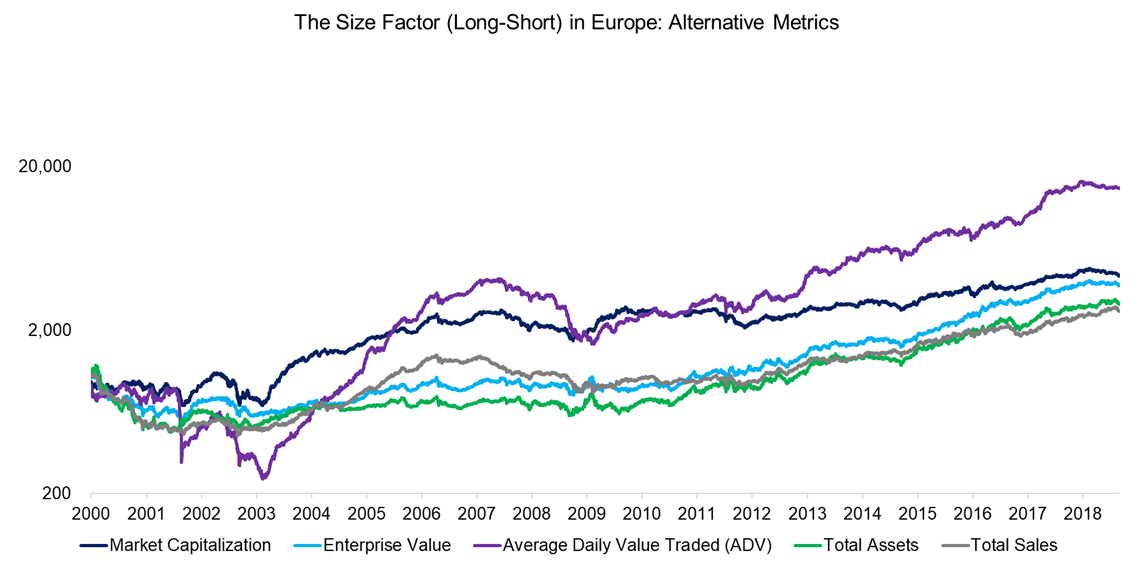
Source: FactorResearch
SMALL VERSUS LARGE STOCKS IN THE FAR EAST
But what about elsewhere? Could the Japanese stock market offer a similar small-cap premium? Apparently not (read Equity Factors In Japan). No matter what small-cap measure is used. As in Europe, the alternative Size metrics show comparable trends. But the performance is disappointing.
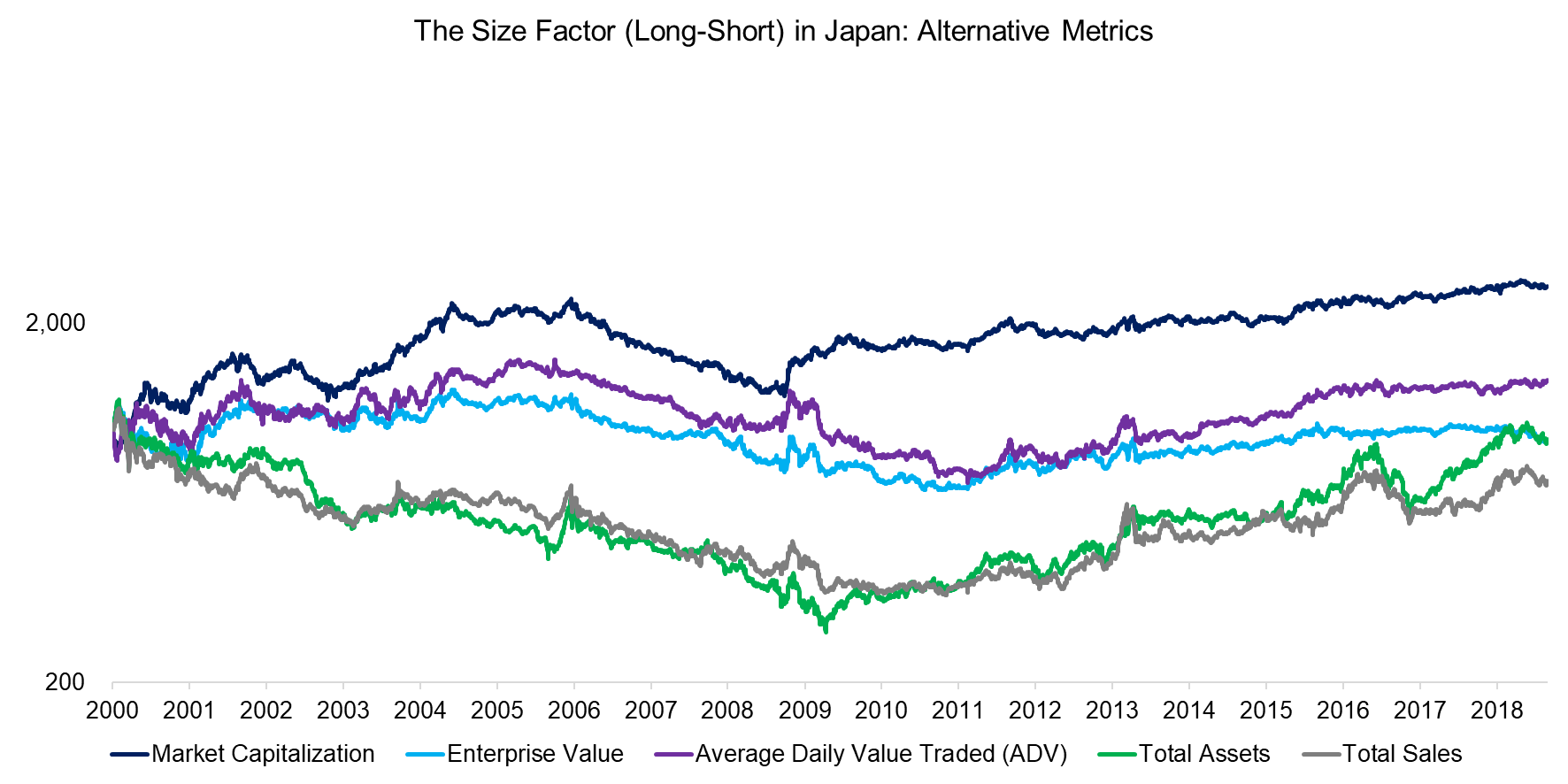
Source: FactorResearch
COMPARING THE SIZE FACTOR ACROSS REGIONS
Finally, we created equal-weight portfolios of the various small-cap metrics, including market capitalization, and compared Size factor performance across regions.
Investors were rewarded for buying smaller, riskier companies in Europe, but not in the United States or Japan. This would seem to cast doubt on the very existence of the small-cap premium.
Common equity factors like Value or Momentum tend to exhibit similar trends across different stock markets and even asset classes. But Size factor performance is relatively heterogeneous, except in Europe and Japan, from 2006 onwards. An interesting question to explore is why investors buy cheap or winning stocks at approximately the same time, but not necessarily small stocks.
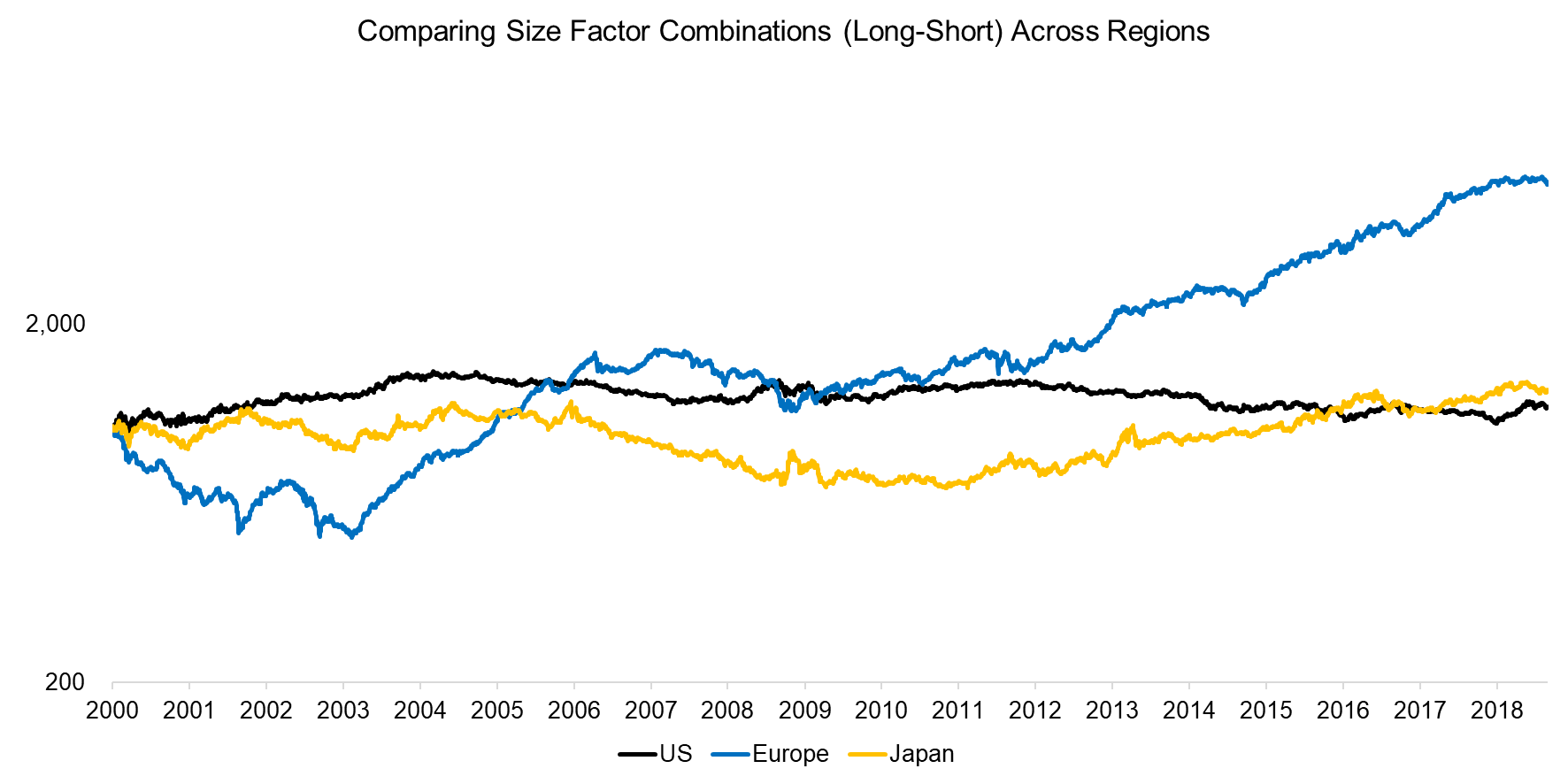
Source: FactorResearch
FURTHER THOUGHTS
Investors frequently combine factors and including the Size factor in a multi-factor portfolio boosts performance, according to research. Sorting for small and cheap stocks, for example, is a popular strategy.
But billions have been allocated to pure small-cap mutual funds and exchange-traded funds (ETFs) on the basis of the small-cap premium. And long-term data for the US stock market contradicts this strategy’s underlying thesis – that the greater risk yields greater returns. Results across regions since 2000 provide a mixed verdict.
Unfortunately for aspiring small-cap investors, the message is clear: Alternative Size factor metrics do not boost performance. So while most of us may enjoy rooting for the Davids, we’re probably better off betting on the Goliaths.
RELATED RESEARCH
ABOUT THE AUTHOR
Nicolas Rabener is the CEO & Founder of Finominal, which empowers professional investors with data, technology, and research insights to improve their investment outcomes. Previously he created Jackdaw Capital, an award-winning quantitative hedge fund. Before that Nicolas worked at GIC and Citigroup in London and New York. Nicolas holds a Master of Finance from HHL Leipzig Graduate School of Management, is a CAIA charter holder, and enjoys endurance sports (Ironman & 100km Ultramarathon).
Connect with me on LinkedIn or X.

